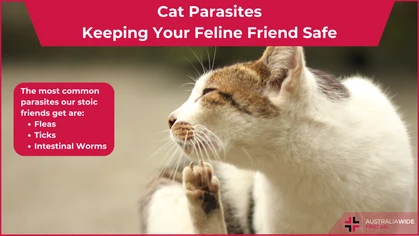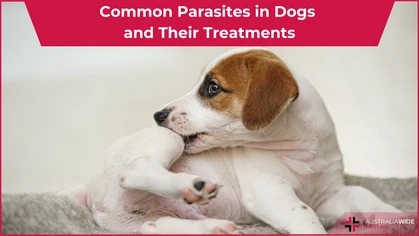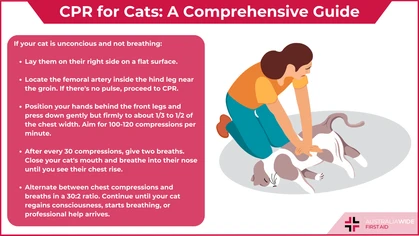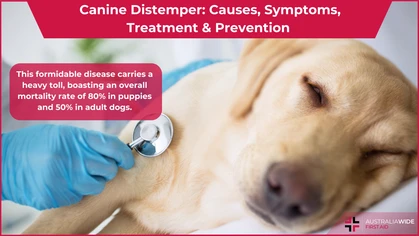Keeping Pets Healthy: Common Diseases

Pets
 We all know that our fur babies are as much a part of the family as anyone else, and their health is of utmost importance.
To help you keep your pets in top-notch shape, we've put together an informative guide about some common diseases that can affect all of our four-legged friends in Australia.
We'll discuss the signs and symptoms to watch for, how these diseases progress when to seek veterinary care, and, most importantly, how to protect your pets from these health issues.
We all know that our fur babies are as much a part of the family as anyone else, and their health is of utmost importance.
To help you keep your pets in top-notch shape, we've put together an informative guide about some common diseases that can affect all of our four-legged friends in Australia.
We'll discuss the signs and symptoms to watch for, how these diseases progress when to seek veterinary care, and, most importantly, how to protect your pets from these health issues.
Fleas and Ticks
Fleas and ticks are common nuisances for Australian pets. These tiny parasites can lead to a range of health problems, from skin irritations to serious diseases. Some of the most dangerous ticks in Australia are the Paralysis Tick and the Brown Dog Tick. Signs and Symptoms:- Scratching, itching, and restlessness
- Redness and inflammation of the skin
- Hair loss
- Anemia (in severe cases)
- A lump on the skin
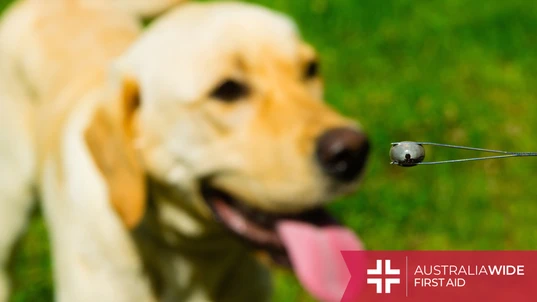
Ticks can lurk unnoticed until they cause significant damage.
Leptospirosis
Leptospirosis is a bacterial infection that can affect both dogs and cats. It is considered a zoonotic disease, meaning it can be transmitted from animals to humans. In Australia, the disease is commonly associated with exposure to contaminated water sources, making it more prevalent in rural areas. Signs and Symptoms: The symptoms of Leptospirosis in dogs and cats can vary, making it challenging to diagnose without proper veterinary assessment. Some common signs include:- Fever
- Muscle pain
- Vomiting
- Jaundice (yellowing of the skin and eyes)
- Kidney and liver damage
- Kidney Failure
- Liver Damage
- Respiratory Distress
Heartworm Disease
Heartworm disease is a significant concern for pet owners in Australia, especially in areas with a high prevalence of mosquitoes, which play a pivotal role in transmitting the disease. Heartworm disease affects dogs, but it can also affect cats. Heartworm disease is caused by the parasitic roundworm called Dirofilaria immitis. These worms primarily infect the heart and lungs of infected pets. When a mosquito carrying heartworm larvae bites an animal, it can transmit the larvae into the animal's bloodstream. Signs and Symptoms: One of the most challenging aspects of heartworm disease is its lack of early symptoms. As the disease progresses, dogs and, less commonly, cats may exhibit symptoms such as:- Coughing
- Exercise intolerance
- Weight loss
- Reduced appetite
- Breathing difficulties
- Heartworm Preventatives: Administer heartworm preventatives regularly as prescribed by your veterinarian.
- Annual Testing: Conduct annual heartworm tests for your pets, even if they are on preventatives. This ensures that any potential infection is caught early.
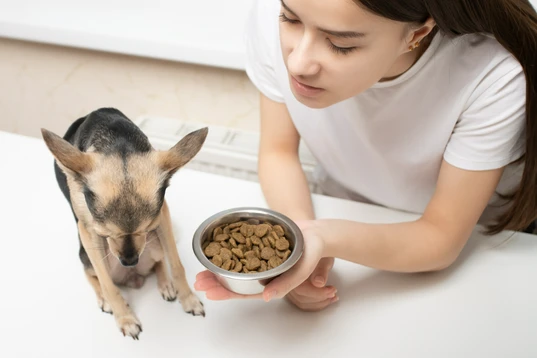
Lack of appetite is a sure sign that something is wrong with your pet.
Parvovirus (Parvo)
Parvovirus, often referred to simply as "Parvo," is a highly contagious and potentially deadly disease that affects dogs, especially puppies. This nasty bug can be contracted through contact with infected feces and contaminated environments. In fact, in Australia, a dog catches Parvo approximately every 24 minutes. You can read more about Parvovirus in our article: Canine Parvovirus: Causes, Symptoms, Treatment & Prevention Signs and Symptoms: Recognizing the signs and symptoms of Parvo is crucial for early intervention. Keep an eye out for the following:- Vomiting
- Lethargy
- Loss of appetite
- Dehydration
- Severe diarrhea
- Dehydration
- Secondary Infections
- Organ Damage
- Death
Conclusion
As responsible pet owners, it's our duty to keep our furry friends safe and healthy. By understanding the common diseases that can affect pets in your part of Australia, recognizing the signs and symptoms, knowing when to seek veterinary care, and taking preventive measures, you can ensure your pets lead happy, healthy lives. So, let's keep our pets' tails wagging, whiskers twitching, and thriving. Our pets bring boundless joy into our lives, and it's our responsibility to make sure their days are filled with health, happiness, and the warmth of our love. Here's to many more playful moments and unforgettable memories with our beloved furry family members!
Originally published at
https://www.australiawidefirstaid.com.au/resources/keeping-pets-healthy
as part of the Australia Wide First Aid Articles Library




